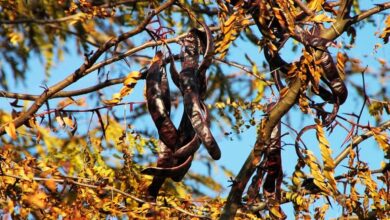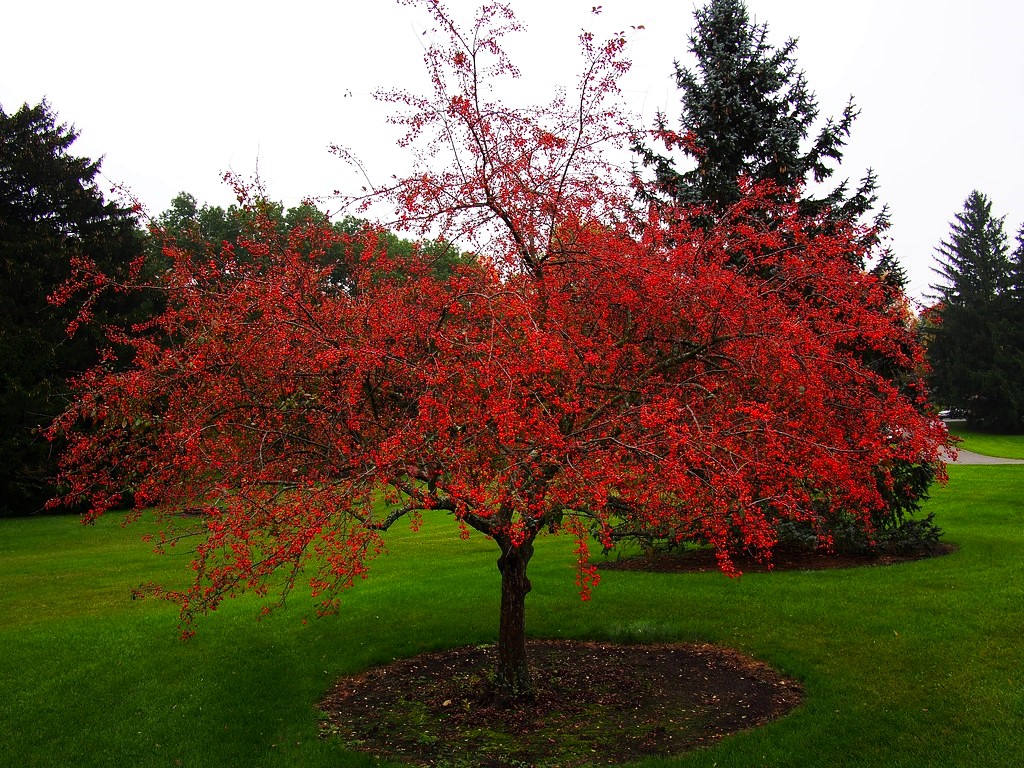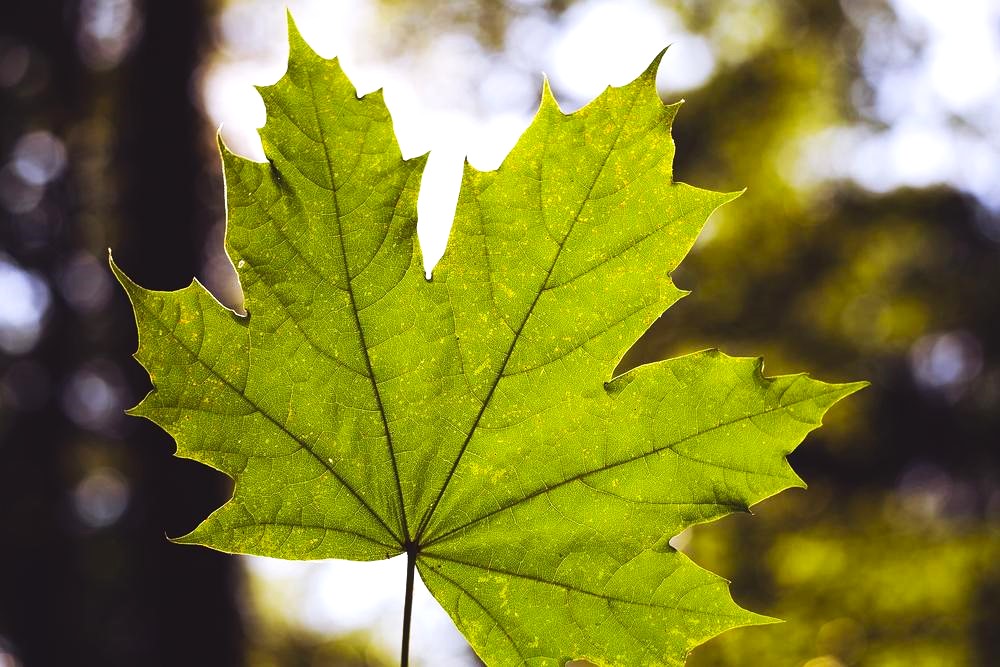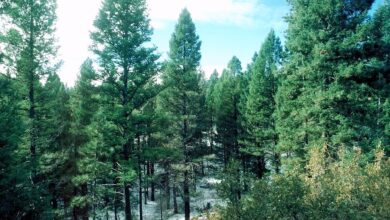Identifying Common Tree Pests & Diseases: Tree Disease İdentification Guide
Tree Diseases:How To Protect Your Trees
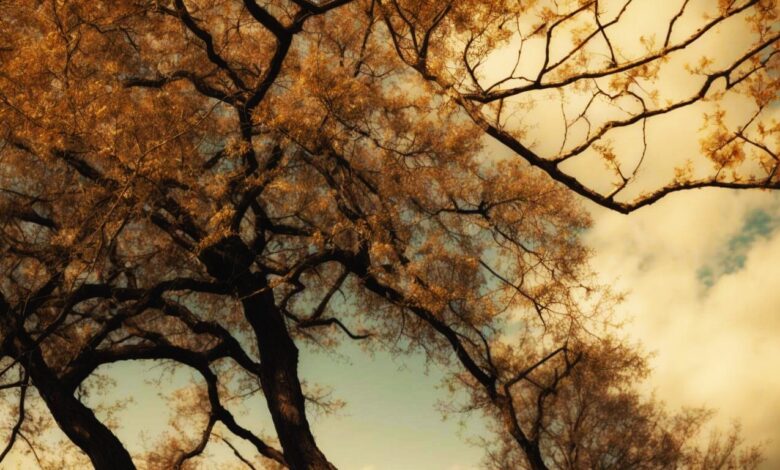
Diagnosing problems with trees can be difficult, just like diagnosing medical problems for yourself can be difficult. Of course, a gardener can solve some problems instantly, but many more call for skill. Certain common tree diseases and pests can be mistaken for other conditions, and some problems require laboratory analysis to identify.
Even though it can be difficult to identify pests and diseases in trees, the first step is to recognize the signs and symptoms. It’s crucial to remember that cultural problems like poor drainage, mishandled irrigation, or inadequate mulching are more often the root cause of plant problems than diseases or insects.
Are Certain Trees More prone to Insects and Diseases?
Certain trees are more susceptible to pest and disease attacks. Trees that are planted incorrectly—for example, in the shade when they should be in the sun—will not flourish. This increases their vulnerability to disease and pest attacks.
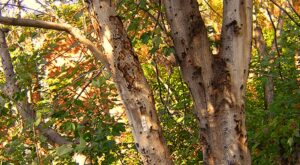
Stress can occur in trees that are not given the right care. This is especially true for trees that receive insufficient watering. The tree’s resistance is weakened by drought stress. When limbs are lost from trees that are not properly pruned to form a strong branching structure, the tree becomes more vulnerable to disease or pests getting into the trunk.
Furthermore, certain trees have been modified to withstand specific illnesses. When planting a tree in an area where tree diseases are common, it is especially crucial to consider disease resistance.
Furthermore, certain tree species are more prone to specific illnesses than others. For instance, spruce trees are frequently harmed by fungal diseases, but beech trees are susceptible to bleeding canker and Laetiporus root rot. Boxwood leafminer, a pest that is unlikely to attack a cherry tree, frequently attacks boxwood. Although it has never been known to come into contact with a redwood, the emerald ash borer kills millions of ash trees annually.
Does Climate Or Hardiness Zone Affect Tree Problems?
Any climate or hardiness zone has the potential to host pest or disease outbreaks for trees. The secret is to choose and plant trees that are suitable for your region. It stands to reason that a palm tree planted in Hawaii will experience fewer issues than one planted in Alaska. In that sense, climate can affect tree issues.
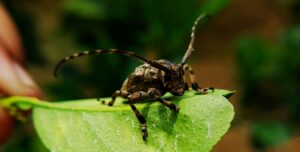
Typical Tree Pests
1. The Spongy Moth
It is the spongy moth that kills trees. It is considered to be one of the most damaging pests of hardwood trees. Its larvae are caterpillars that consume the foliage of over 500 different tree species. Each year, it destroys over a million forested acres and kills trees by defoliating them.
Look for the egg masses on tree trunks in the spring if your hardwood tree is one. Each of these yellow masses, which range in size from 1 to 2 inches, can contain 500 eggs. The eggs develop into larvae that consume the oak, birch, elm, and maple leaves. A square foot of tree leaves can be consumed daily by a single larva.
Although it’s difficult to eradicate these pests, you can burn or submerge egg masses if you come across them. In late fall and early spring, using a horticultural spray can be beneficial. Keeping your trees healthy enough to withstand an attack through proper watering, fertilization, and pruning is your best bet.
2. Caterpillar Western Tent
A variety of trees, including poplar, willow, cottonwood, quaking aspen, and particularly fruit trees, are attacked by the western tent caterpillar. In the spring, look for their “signature”—white silken tents perched in the branches. Starting at the top of the tree and spreading outward, this will result in browning foliage and falling leaves.
These caterpillars begin as eggs that are left on the tree to overwinter. As they develop into larvae, they spin a white web that gets wider. They transform into moths, which come out in the summer to lay eggs. The larvae of tent caterpillars can defoliate a small tree, even if you only have one colony. Only numerous colonies cause harm to large trees.
Keep an eye out for this in your trees, and if you spot a colony of tents, cut them out and destroy them. For these pests, insecticides are also available.
3. Tussock Moth Douglas-Fir
Douglas-fir The larvae of moths are called tussock moth caterpillars. When the eggs hatch, the larvae eat the needles of the Douglas-fir, true fir, and spruce trees. This isn’t a one-time thing, folks. The tussock moth is a permanent resident that causes significant damage to trees every year when it attacks.
These trees are good to look for in late spring. The leaves of the tree will begin to turn russet at the top or outer branches and spread throughout the entire tree, as you can see. Look for egg masses on the canopy with your eyes. If left unchecked, trees become weakened and may even succumb to bark beetles. Tree tops may even die in a single season.
Thankfully, these outbreaks are frequently contained by the Douglas-fir tussock moth’s natural enemies after a few seasons. However, keep an eye out for egg masses. These pests can be effectively controlled with a variety of insecticides.
Typical Tree Illnesses
1. The anthracnose
Are there any hardwood deciduous trees in your landscape? These trees are susceptible to a class of fungal diseases known as anthracnose that attack the leaves of the trees. It initially shows up on foliage as erratic brown or yellow spots that gradually get darker and enlarge. They turn into submerged lesions. Both defoliation and the death of the tips of young branches may come from this.
Even when it rains, anthracnose spreads very quickly. Since the fungus feeds on the remnants of diseased tree leaves, clearing out the plant debris can help stop its spread. Using drip irrigation, making sure your soil drains properly, and purchasing disease-resistant plants are also helpful.
Remove any diseased branches from trees and dispose of the cuttings. Eliminate the diseased leaves and trim away any dead wood. It is advised to use a dormant Bordeaux mix spray.
2. Blight from fire
A bacterial disease known as “fire blight” affects about 75 different species of trees and shrubs, including pear, apple, crabapple, and mountain ash trees. In addition to killing blossoms and tender new growth, fire blight can also cause the tree to die. When a tree has many infected shoots, it appears as though a fire has scorched it.
What should I search for? Your tree’s flowers wither and die after appearing as though they were drenched in water. Young leaves wilt and turn gray, bending down to form a hook. Shoots and leaves wilt and turn a gray-green color. Bark can peel and fruits can dry out.
To combat this illness, cut off afflicted branches to stop the disease from spreading to the trunk. While the tree is dormant, take this action, and dispose of the clippings with caution. The tree is doomed if you fail and the disease spreads to the main trunk. Take it out of the landscape.
3. Rotting Armillaria Roots
A fungal root rot known as armillaria root rot. A lot of trees are weak. In actuality, Armillaria has a wide host range that includes practically all trees because it is the result of numerous fungal species. Stunted foliage, branch dieback, and yellowing needles are some of the symptoms. A white, rotting fungus in white fans on the trunk close to the soil line is the classic symptom. Look for rotting roots and slow or nonexistent growth at the top of the tree.
Whenever possible, buy species that aren’t affected by the fungus. If not, carefully prune off any affected branches and dispose of them, making sure to remove all affected material from the ground.
Keep in mind that stressed trees are more susceptible to Armillaria root rot. Therefore, take care of insect pests as soon as you identify them, water your trees during dry spells, and prevent root damage.
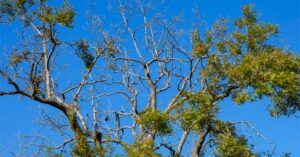
When Do Pests Kill Trees?
Certain pests can cause tree death, while others are merely annoyances. It is best to plant and care for your trees appropriately to keep them healthy, then keep an eye out for pests.
Is It Possible to Save a Truly Ill Tree?
It might be possible to save a tree, even though some trees are destroyed by disease and need to be removed. Have an arborist give you some advice.

